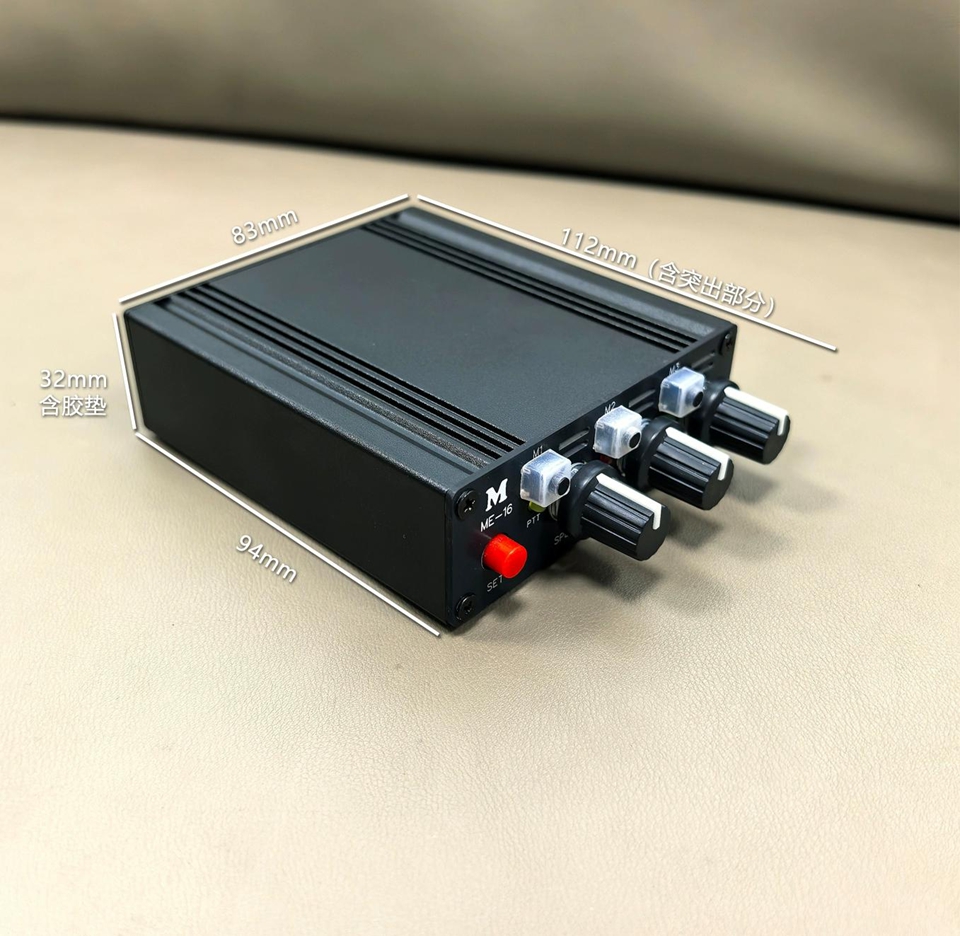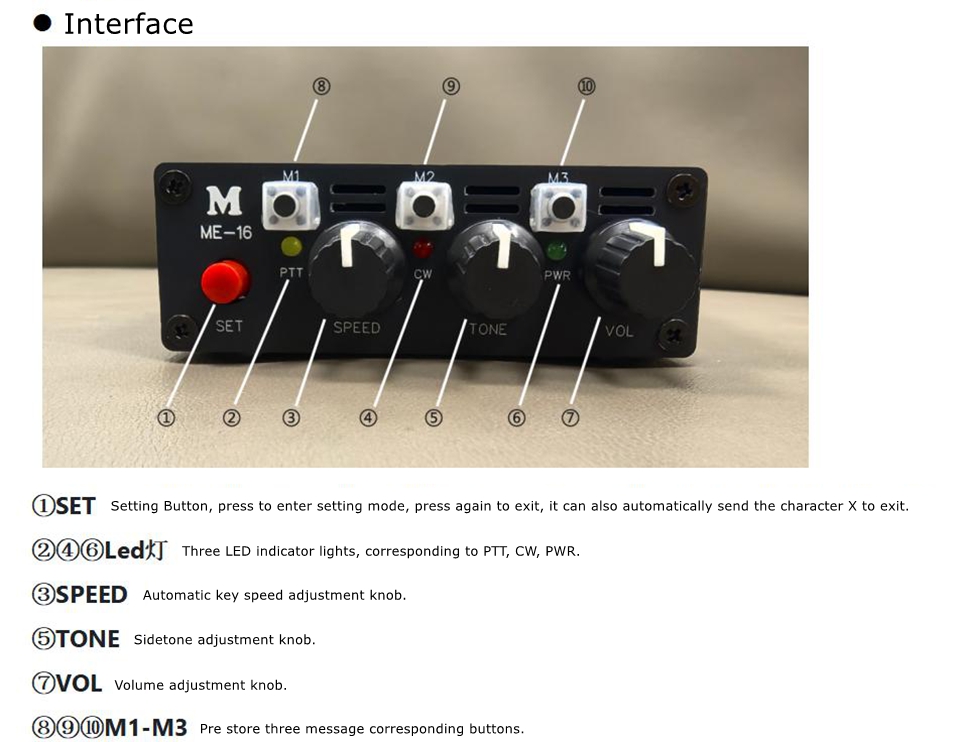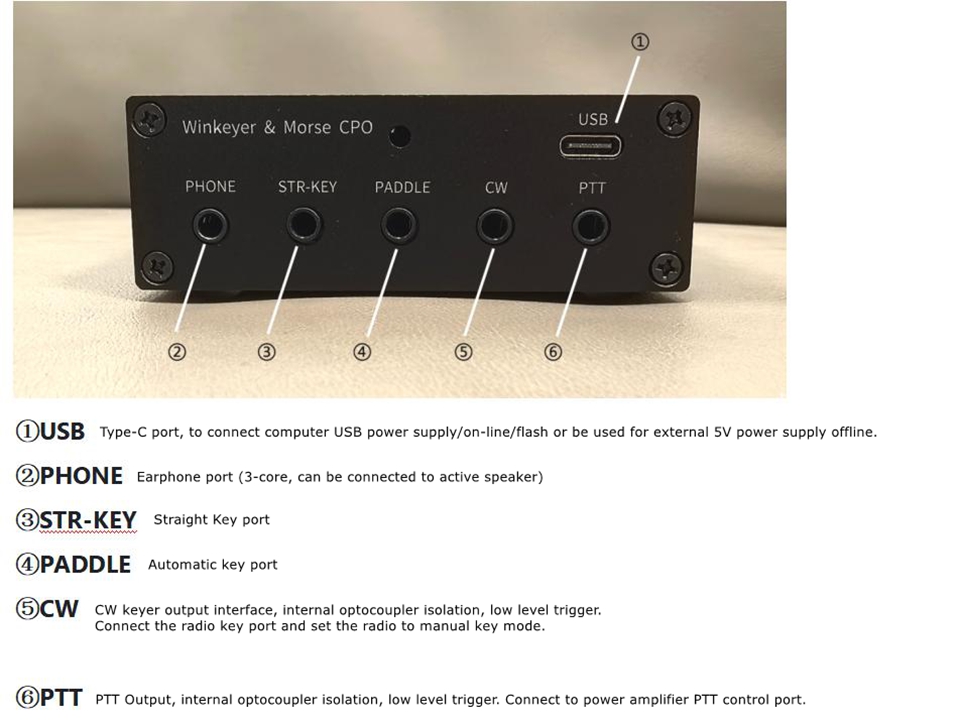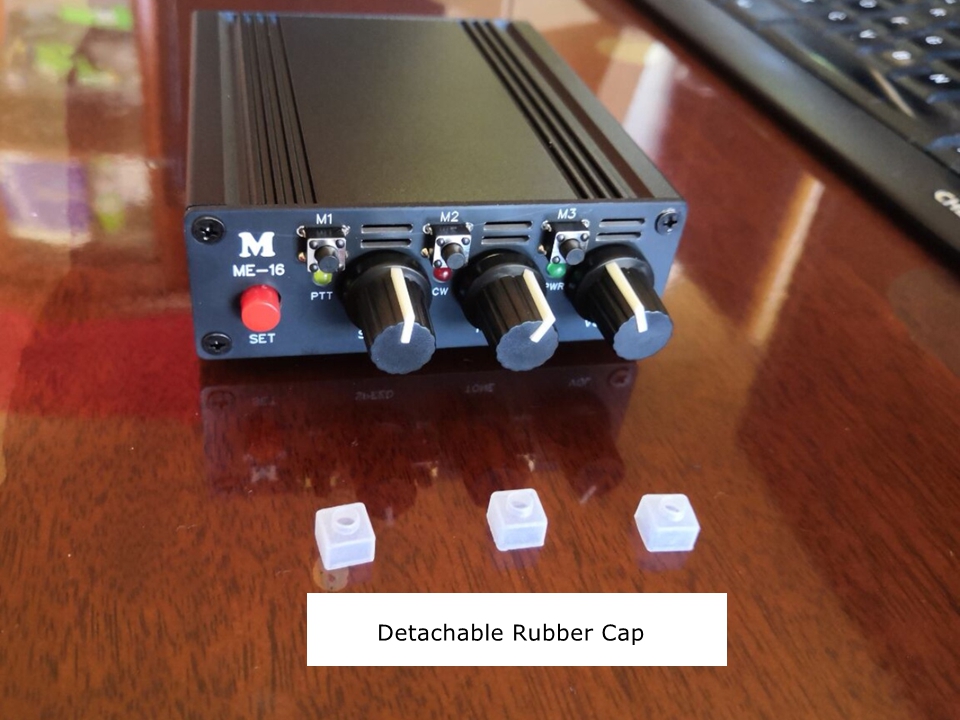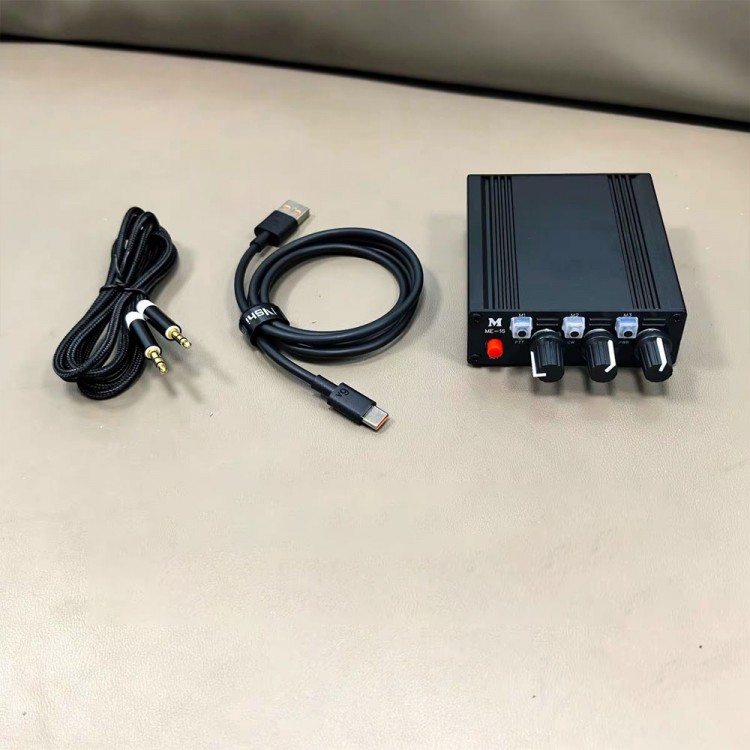
| Quantity | 3+ units | 10+ units | 30+ units | 50+ units | More |
|---|---|---|---|---|---|
| Price /Unit | $71.33 | $69.88 | $67.69 | $64.78 | Contact US |
ME-16 CW Keyer Morse Code Practice Oscillator DDS Sine Wave CW Trainer Support for Winkey Protocol
Description:
- This Keyer/CPO is a powerful practical CW peripheral that supports for Winkey protocol and is also a high-quality sidetone practice tool.
- Morse CPO: Morse Code Practice Oscillator
- The sidetone of the keyer is a DDS sine wave, with a smooth key control envelope and no on-off clicking. The design reference is the sidetone for Morse Runner (a C competition practice software).
Specification:
- Product size: 112 x 83 x 32mm
- Shell material: aluminum alloy + anodizing for shell and rear panel, PCB for front panel
- Interface: Type-C
- Power supply voltage: 5V (4.3 - 5.5V)
- Current:
At 5V: 30 - 100mA
Standby: 30mA
Headphone/line output: 40mA
Built-in speaker (8ohms) maximum volume: 65 - 100mA
- Net weight: 220g
- Automatic key default speed range: 10 - 54WPM (consistent with the default value of N1MM)
- Sidetone frequency: 350Hz - 900Hz continuously adjustable (consistent with the sidetone frequency range of MR)
- Pre-store message: 3 (corresponding to M1 - M3)
Package Included:
- 1 x CW Keyer
- 1 x Type-C Data Cable
- 1 x 3.5mm Male to Male Connection Cable (1.5m)
Function Introduction:
- Potentiometer simulation speed regulation: No need to enter the radio menu for speed regulation; The configuration command can lock the speed control knob.
- Personalized adjustment compensation including full key mode, dot stroke exchange, dot stroke ratio/weight, etc., with different styles of adjustment set as needed.
- PTT function: Adjustable first character delay, QSK delay, to avoid slow amplifier hot switching or eating up some first characters. Convenient kit for connecting power amplifiers without PTT output; Simplify the PTT control wiring of the radio station.
- CW key control function, replacing the serial CW transmission line. At the same time, N1MM macros are transmitted to Keyer through ASCII text and then sent by Keyer to avoid serial port lag caused by insufficient computer resources or conflicts.
- Online function: Connect with software that supports for Winkey protocol. For example, after connecting with N1MM, the speed can be synchronized and linked, and the computer can seamlessly switch between automatic shooting and manual/manual keys; The Winkey option of software such as N1MM can set takeover related parameters.
- Practice tool function: supports independent input of automatic and manual keys.
- Portable design, considering volume/weight/integration, protecting hearing, especially preventing audio distortion. The internal side audio amplification gain is strictly controlled, which also helps reduce the overall power consumption of the machine. To ensure the sidetone effect, do not modify or increase the level and gain of the internal side audio section.
- Built in high-quality small cavity speakers, but due to volume limitations, the overall frequency response is biased towards mid frequency. For better sound quality and volume, headphones or an external active speaker can be used (connected to a 3.5mm headphone jack, with the output consisting of a head tip and a middle ring connected in parallel with a bottom ground for convenient stereo headphone use).
- The built-in speaker ensures the most commonly used 500-750Hz sound quality. Below 500Hz, as the frequency decreases, the volume attenuation (determined by the frequency response curve of the cavity speaker) is significant but not distorted.
- Near end delay-free sidetone for remote operation: As long as Winkeyer or external key controller can be connected for remote operation, this Keyer can be used to obtain high-quality near end delay-free sidetone. The side tone can be input into the computer through Keyer's headphone jack. Attention: If inputting from the computer's mic port, in order to prevent distortion, the gain (volume) should not be too high, and the input volume, mixing, and other related settings of the computer's sound card should also be reasonable.
- In daily QSO, competitions, and exercises, to protect hearing and prevent auditory fatigue, sidetone only need to be at a very low volume, and a lower sidetone frequency is also beneficial. As an practice tool, it does not require a high volume.
Keyer Configuration: SET Button + Dual Paddle Automatic Key (not included) Configuration Method:
- Press the SET key on the Keyer panel, and when you hear the "da" prompt sound, enter the configuration mode where you can use the auto key to send relevant letters for configuration. If the letters sent are not very standard and Keyer cannot recognize them, Keyer will reply with a "?" (Morse code question mark) query, and relevant commands can be sent again at this time.
- To exit the settings mode, you can send the letter X or press the SET button on the panel. After hearing the "da" prompt sound, it will return to normal usage mode.

